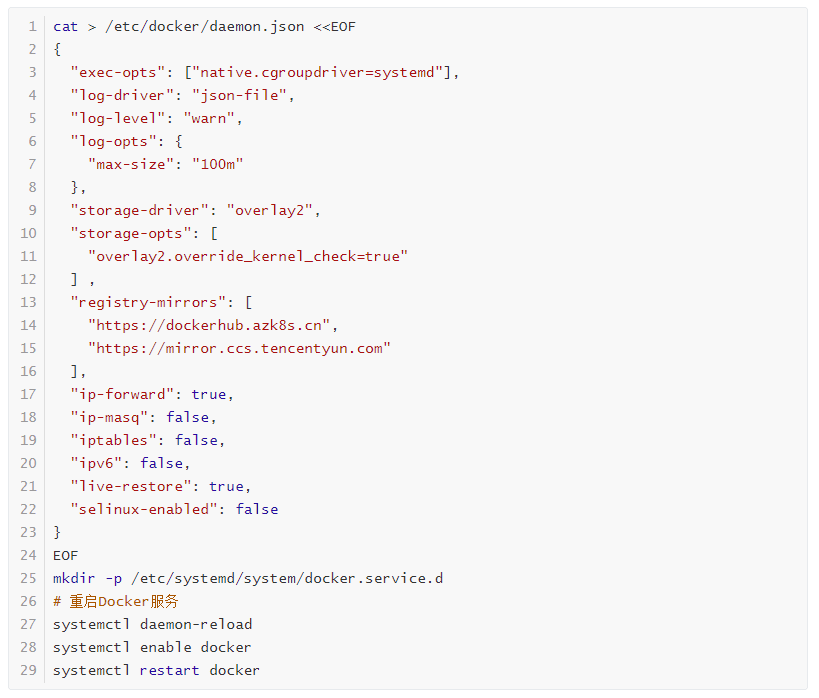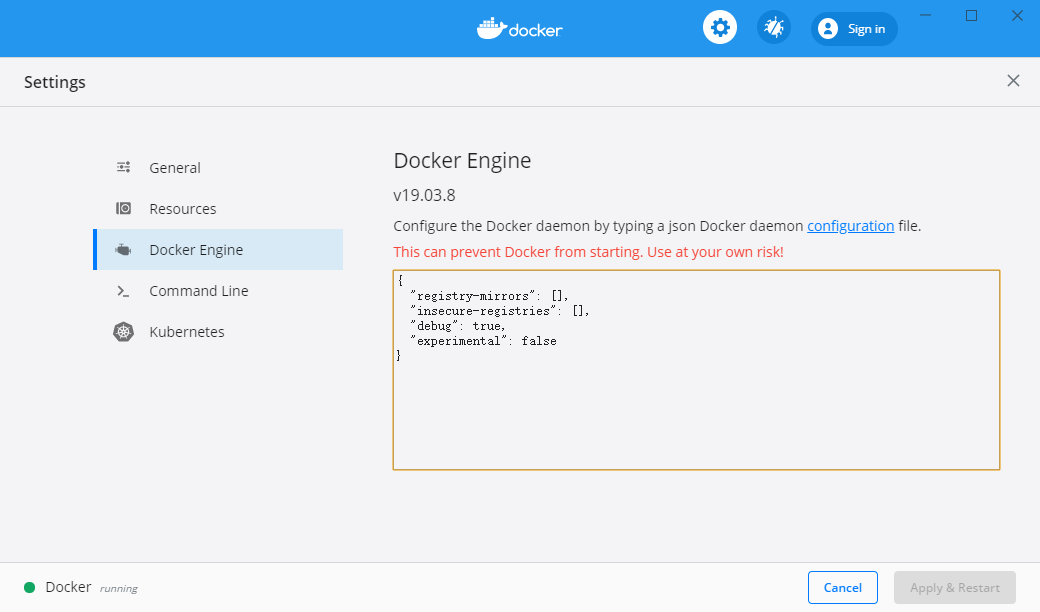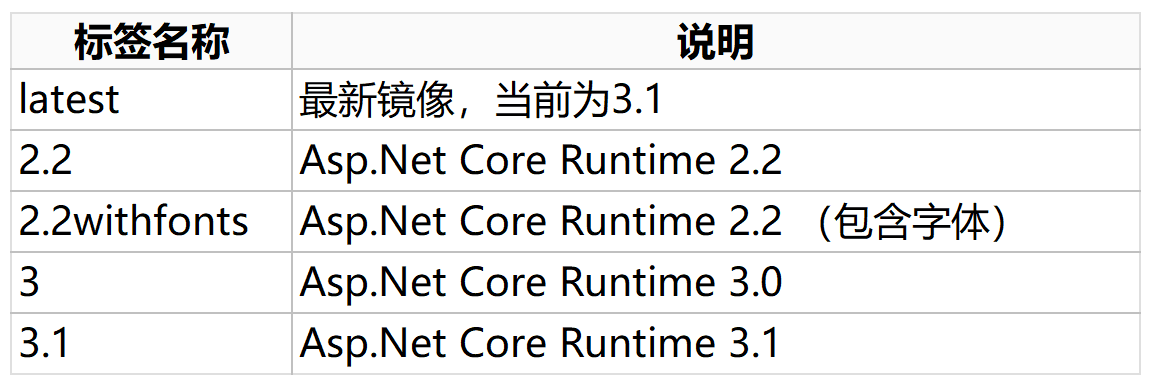This article has been included GitHub There are also Internet factory interview questions, interview strategies, efficient learning materials and so on
1. Preface
Docker is cool to use, especially when used in DevOps practice.However, when you pull a mirror at home or locally, you often encounter constipation - either slowly or intermittently, or the connection timed out!
It's a nightmare when we have a big mirror (like someone losing a Warcraft bag in their code)!So how do you solve this problem?Next, we will solve this problem mainly from the following aspects:
- Using Mirror Accelerators
- Source Change
- Make your own mirror and push it to domestic warehouse
- Build your own near mirror warehouse
- Last trick (confidentiality)
2. Mirror Accelerators
Accelerators can be sacrificed for playing online game cards. Mirror-pulling commonly has related accelerators.Mirror Accelerators are basically available from domestic cloud manufacturers:
Docker Hub Mirror Accelerator List

How do I use the Mirror Accelerator?
Docker Hub Mirror Accelerator Configuration
Linux systems can execute the following shells:

Once configured, you can check the validity of the docker info command:

What if it's Windows 10?You can configure it at the interface shown in the following figure:
Windows 10 Configuration

3. Source Change
Accelerators are cool to use, but most of the time, even with an accelerometer configured, some mirrors don't work well (possibly related to the accelerometer's international bandwidth), so you have to switch sources.Accelerators are not everything, especially when your mirror is large.Then you have to find the right source.
For example, the SDK image of.NET Core, we can use the Azure China mirror source uniformly, as shown in the table below, we can see that "mcr.microsoft.com"The corresponding agent in China is"mcr.azk8s.cn":

So we can use "mcr.azk8s.cn"instead of the official"mcr.microsoft.com"Source:
# docker pull mcr.microsoft.com/dotnet/core/sdk:2.2-stretch docker pull mcr.azk8s.cn/dotnet/core/sdk:2.2-stretch
As shown in the code above, we will change the source of Azure International to that of Azure China, and the pulling speed will be fast.Changing the source means that we also need to modify Dockerfile's commands:
#FROM mcr.microsoft.com/dotnet/core/sdk:2.2-stretch AS build #Modify to Azure China Mirror FROM mcr.azk8s.cn/dotnet/core/sdk:2.2-stretch AS build
4. Pushing self-made mirrors into domestic warehouses
What if there is no source?Can't it be cold?Do it yourself.It can be built overseas based on GitHub hosting, Azure DevOps and Docker hub, and then pushed into domestic mirror warehouses.
Relevant Mirror Label Description

Then simply replace it with your own source in the Dockerfile to enjoy a quick flight:
#See:https://github.com/xin-lai/aspnetcore-docker FROM ccr.ccs.tencentyun.com/magicodes/aspnetcore-runtime:2.2withfonts AS base
Here's a trick to share: apt packaging on Linux is often very slow and unreliable, and sometimes domestic agents are unreliable, so consider using an overseas build to mirror it.
5. Build your own near mirror warehouse
Server bandwidth is not good, local network is not good, what can I do?What else can you do? Build your own warehouse.It's recommended that you use nexus, which hosts packages like Docker, Nuget, Jar, npm, Bower, and so on. It's hardly too sharp.How to build?Yaml often takes the following exams:
apiVersion: apps/v1beta2
kind: Deployment
metadata:
labels:
k8s-app: nexus
name: nexus
namespace: default
spec:
progressDeadlineSeconds: 600
replicas: 1
revisionHistoryLimit: 10
selector:
matchLabels:
k8s-app: nexus
strategy:
type: Recreate
template:
metadata:
labels:
k8s-app: nexus
spec:
containers:
- image: sonatype/nexus3
imagePullPolicy: IfNotPresent
name: nexus
resources:
limits:
cpu: "2"
memory: 5024Mi
requests:
cpu: 10m
memory: 256Mi
volumeMounts:
- mountPath: /nexus-data
name: data
restartPolicy: Always
nodeName: k8s-node1 #Force constraints to dispatch Pod s to specified Node nodes
terminationGracePeriodSeconds: 30 #The wait time (in seconds) at the end of a Pod
volumes:
- name: data
hostPath: #Use Host Directory
path: /var/nexus
hostNetwork: true
---
apiVersion: v1
kind: Service
metadata:
name: nexus
namespace: default
spec:
ports:
- name: tcp-8081-8081
nodePort: 30081
port: 8081
protocol: TCP
targetPort: 8081
- name: tcp-8082-8082
nodePort: 30082
port: 8082
protocol: TCP
targetPort: 8082
- name: tcp-8083-8083
nodePort: 30083
port: 8083
protocol: TCP
targetPort: 8083
- name: tcp-8084-8084
nodePort: 30084
port: 8084
protocol: TCP
targetPort: 8084
- name: tcp-8085-8085
nodePort: 30085
port: 8085
protocol: TCP
targetPort: 8085
- name: tcp-8086-8086
nodePort: 30086
port: 8086
protocol: TCP
targetPort: 8086
selector:
k8s-app: nexus
sessionAffinity: None
type: NodePort6. Final Solutions
Not yet. Copy it with a U disk.Don't say you know me.You don't believe you can copy it through a U drive?You can learn about the following two commands:
- docker save
- docker load